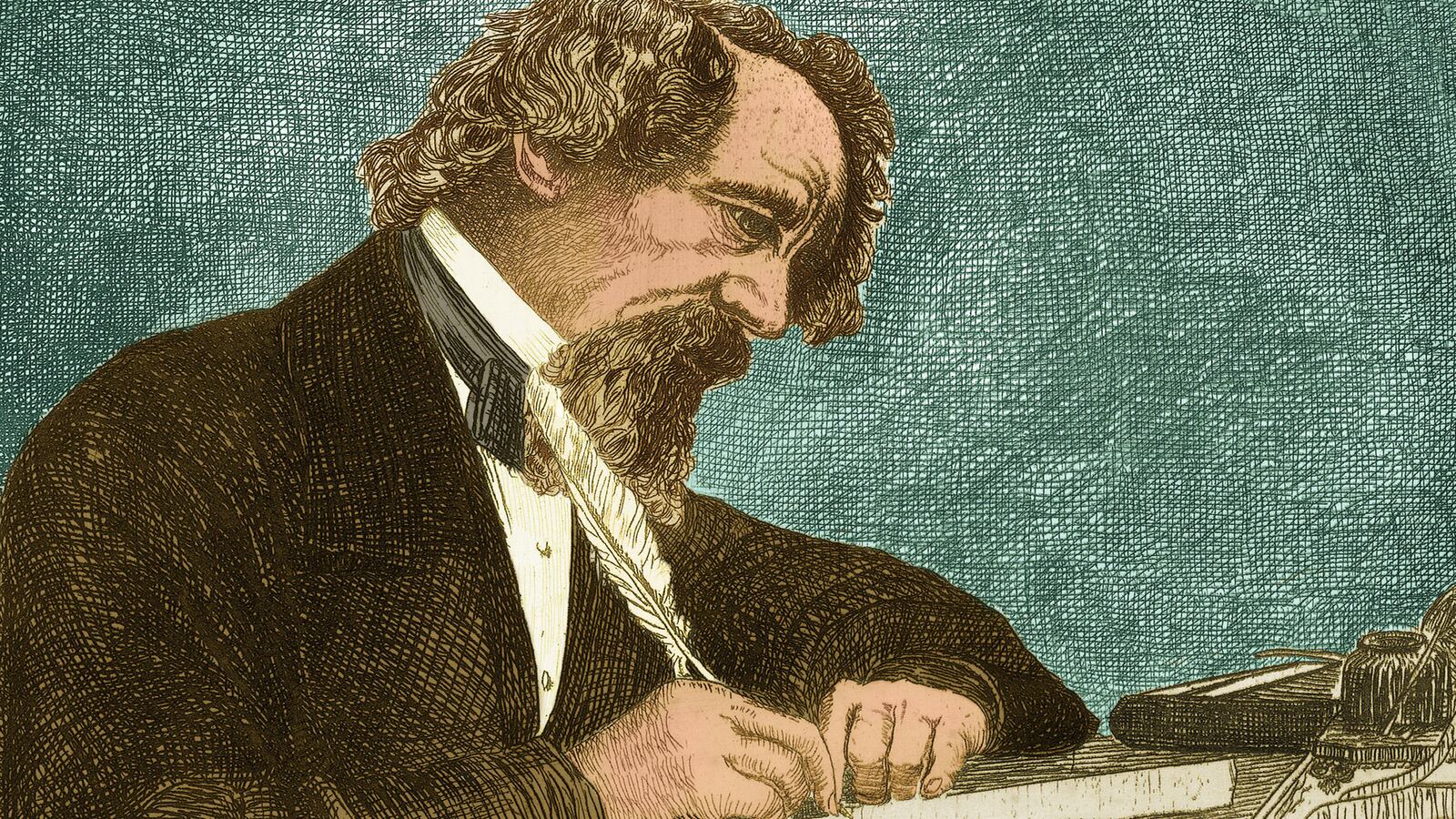On June 8, 1870, Charles Dickens spent most of the day working on his latest novel. Normally Dickens would confine his writing to the morning hours, but on this day he met his close friend John Forster for lunch and then returned to his novel in the afternoon.
At 6:10 p.m., shortly after he had joined his family at the dinner table, he had a stroke. Twenty-four hours later, the most celebrated author in Victorian England was dead.
“The loss of no single man during the present generation, if we except Abraham Lincoln alone, has carried mourning into so many families, and been so unaffectedly lamented through all the ranks of society,” Horace Greeley, the founder of the New-York Tribune, said.
In a letter to Forster, Henry Wadsworth Longfellow wrote, “The terrible news from England fills us all with inexpressible sadness. Dickens was so full of life that it did not seem possible he could die, and yet he has gone before us, and we are sorrowing for him.”
Even Queen Victoria weighed in, sending “her deepest regret at the sad news of Charles Dickens’s death” via telegraph from Balmoral Castle.
But beyond the initial shock of sadness, what avid Dickens fans were really wondering—were really praying for—was the answer to one question: did Dickens finish The Mystery of Edwin Drood before he kicked it?
Towards the end of his life, Dickens was beginning to suffer from ill health. An avid walker, he was beset by increasing leg pain in addition to a variety of other ailments that he was treating with self-prescribed laudanum. But poor health didn’t slow him down one bit.
The fall before his untimely demise, he had not only begun a new novel, he had also launched a new speaking tour, commitments he normally did not take on simultaneously.
On Aug. 6, 1869, Dickens wrote to Forster that he had “a very curious and new idea for my new story. Not a communicable idea (or the interest of the book would be gone), but a very strong one, though difficult to work.”
The novel was titled The Mystery of Edwin Drood and it was going to be Dickens’s version of a dark whodunnit set in his hometown of Rochester. The story centered around a choirmaster with a hidden wicked side who covets his nephew’s fiancée. When the nephew, one Edwin Drood, suddenly disappears, a murder mystery ensues.
“I hope his book is finished. It is certainly one of his most beautiful works, if not the most beautiful of all,” Longfellow wrote in his condolence letter. “It would be too sad to think the pen had fallen from his hand, and left it incomplete.”
Alas, the pen had fallen from Dickens’s hand when the tale was only halfway done. The contract for the novel specified it would be published in 12 installments; Dickens completed six, with the last of the chapters left two pages short.
And so was born the mystery within the mystery that has plagued Dickens obsessives for over a century with no resolution in sight: how did Dickens intend to resolve the main questions at the heart of the book — who killed Edwin Drood and is Drood, in fact, dead?
In a move that was a departure from his previous writing process, Dickens did not leave any notes on the plot of his last novel or what he intended to do with the second half. But there are some hints that he knew exactly how he planned to solve the puzzling twists and turns.
Queen Victoria was a big fan of Dickens (she called Oliver Twist “excessively interesting”), and their reigns had largely coincided — hers on the throne and his as the country’s premier novelist. She had tried to meet him on several occasions, but he had politely, and against royal protocol, declined each attempt.
Finally, on March 7, 1870, only a few months before his death, the long-awaited meeting took place. Both parties stood throughout the visit, according to Claire Tomalin in her biography of the author, Charles Dickens: A Life, and they covered topics ranging from the popularity of the royal family in America to rising food costs and the Queen’s difficulty finding good servants.
Dickens, who Tomalin says had a “lack of enthusiasm for royalty” managed to graciously grin and bear it when Victoria presented him with a copy of a book she had written, Leaves from the Journal of Our Life in the Highlands. (When it was published two years earlier, Dickens had written to a friend that it was “preposterous” and that he wouldn’t have joined “the Shameful lick-spittle chorus” and published a glowing review of it “for any money,” unlike the friend to whom his letter was addressed.)
At one point, Victoria not-so-subtly hinted that she regretted never having been able to attend one of Dickens’s readings. The author told her in no uncertain terms that he did not give private performances but, the story goes, he did offer to reveal to her the ending of Drood.
To the horror of those who have been haunted ever since by the unsolved crime, Victoria allegedly declined his offer. (Maybe she was staunchly anti-spoiler, or maybe she was paying him back for refusing her so many times.)
Forster, for his part, claimed that he knew exactly what Dickens intended, despite Dickens writing in that early letter that the plot of his latest novel was “not a communicable idea.”
Dickens would speak often to his dear friend about his work and even visited the Forster family to read each completed chapter aloud before it was published (take that, Queen Victoria).
In The Life of Charles Dickens, Forster’s posthumous biography of his friend, he lays out what Dickens had intended to happen at the end of Drood. (Semi-spoiler alert: he said the uncle did it, disposed of the body by dissolving it in lime, and his crime was revealed with the discovery of his nephew’s lime-resistant gold ring.)
But despite Forster’s certainty, many critics have maintained that the matter is not settled, and debate continues to this day as to the ending Dickens intended. The result has been an almost endless supply of takes and adaptations and attempts to complete the original text.
Writers ranging from Charley Dickens (Charles’s son) and the American novelist Robert Henry Newell to the American publisher Thomas James (who claimed to have channeled the spirit of Dickens through a medium) and more recently Leon Garfield have all attempted to finish what Dickens started.
There have been film and TV adaptations, including a 2012 version for the BBC produced by mystery writer Gwyneth Hughes who, in a story for The Guardian on her experience, wrote that, “What’s less well known is that Dickens died on purpose—to avoid having to finish it. Or that’s what I came to believe, after months of wrestling in darkened rooms with the questions he ran out of time to answer.”
And there was a 1985 Broadway adaptation that did away with the hair-wringing job of deciding what Dickens intended by allowing the audience to vote on their ending of choice. The result was a tale whose ending “as often as not” was chosen “not according to logic or the likelihood of guilt but out of affection for one or another member of the cast,” wrote Charles McGrath in The New York Times.
Given how many scholars have been driven to the brink of madness parsing out Dickens’s every word and crumb of a clue, this may have been the best Drood decision ever made.
Not all critics agree on the literary merit of this last novel, but what is thoroughly decided is that, to the very end, Dickens never stopped being the Great Novelist Charles Dickens.
Tomalin is one of the critics of this last novel, writing that “the mystery is a slight one, the villain less interesting than he promises to be at first, the comedy only moderately funny, the charm a little forced, and the language reads at times like a parody of earlier work.”
But, in the end, she writes that The Mystery of Edwin Drood can be seen “as the achievement of a man who is dying and refusing to die, who would not allow illness and failing powers to keep him from exerting his imagination, or to prevent him from writing: and as such it is an astonishing and heroic enterprise.”







